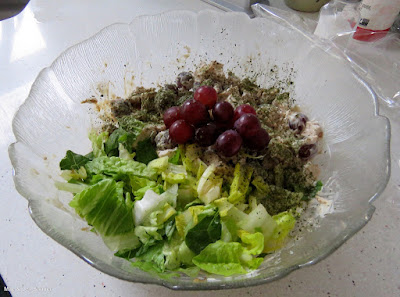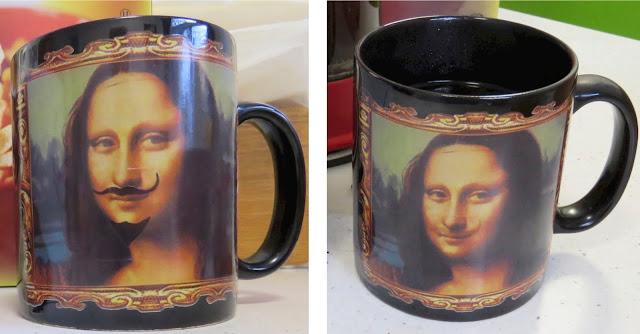"Mr. Parker was a bachelor, and occupied a Georgian but inconvenient flat... for which he paid a pound a week. His exertions in the cause of civilization were rewarded, not by the gift of diamond rings from empresses or munificent cheques from grateful Prime Ministers, but by a modest, though sufficient, salary, drawn from the pockets of the British taxpayers. He awoke, after a long day of arduous and inconclusive labor, to the smell of burnt porridge." (Dorothy Sayers, Whose Body, Pocket Book edition, p. 65)
It's easy to see how much Parker, the plain-clothes detective, differs from the very aristocratic Lord Peter Wimsey, star of the Dorothy Sayers mystery series. Lord Peter's wealth and privilege allow him to regard detecting as an amusing hobby. He enjoys life in a luxurious flat with an attentive personal servant, his valet Bunter. He can even afford to support Bunter's hobby of photographing crime scenes, buying Bunter cameras and darkroom equipment and leaving the valet's time free to develop his photos, though of course always photos of use to himself. In contrast, Parker can barely afford a decent breakfast.
While Parker is getting ready to eat his porridge -- clumsily prepared by his daily char woman Mrs. Munns -- he contemplates the "sordid absurdity of the human form." Before he gets to the porridge, though, he receives a phone call. It's Bunter with the message: "His lordship says he'd be very glad, sir, if you could make it convenient to step round to breakfast."
Sayers continues: "If the odour of kidneys and bacon had been wafted along the wire, Parker could not have experienced a more vivid sense of consolation." Parker's anticipation highlights difference between an aristocratic and a lower-middle class breakfast. Parker hurried to Lord Peter's flat, viciously saying to Mrs. Munns who was making bad tea: "You can take the porridge home for the family." On the social ladder in an English mystery story, there's always someone lower down. And when Parker arrived at Lord Peter's house, "Mr. Bunter served him with glorious food, incomparable coffee, and the
Daily Mail before a blazing fire of wood and coal." (p. 65-66)
The culinary contrast between the social levels of the two detectives had come up the previous day while Parker was continuing his analysis of a complex murder and disappearance and eating "a plate of ham sandwiches and a bottle of Bass." Leaving Parker at work on the case, Lord Peter went to a restaurant named Windham's to meet a friend. I suspect that Sayers believes her readers will recognize this dining establishment; obviously I don't. The menu there clearly doesn't tend towards ham sandwiches and Bass! Lunch at Windham's, in fact, is consommé Polonais; a filet of sole; "the Montrachet '08" about which Lord Peter complains; and a salmis of game, which he declares "not bad." He also complains about a bit of cork in the wine glass. The Montrachet by the way, is from
1908 -- this mystery takes place in 1923! (p. 56-57)
Lord Peter's lifestyle, as portrayed in these small food scenes and throughout the book, might now, nearly 100 years later, be seen as immature and irresponsible. His nonchalance about work led me to suspect that he was very young -- but I now know that in
Whose Body he was around 32 years old, just still without mature responsibilities! Moreover, in
The Unpleasantness at the Bellona Club (
which I wrote about here) he was in his late thirties.
Food characterizes yet another random possible witness: "The Indian Colonel on the first floor was loud but unexpectedly friendly," Parker reports to Lord Peter as they are finishing breakfast. "He gave me Indian curry for supper and some very good whiskey." (p.68)
 |
| Monty Python's Cheese Shop didn't have any named cheeses either. |
As
Whose Body continues, Lord Peter again suffers for the sake of his detecting hobby when he has to eat in Salisbury in a dining establishment not at all up to his standards. "As he sat sadly consuming that impassive pale substance known to the English as 'cheese' unqualified (for there are cheeses which go openly by their names, as Stilton, Camembert, Gruyère, Wensleydale or Gorgonzola, but 'cheese' is cheese and everywhere the same), he inquired of the waiter [about a person of interest in his case]" (p. 80) Reminds me of the Monty Python cheese shop episode.
The most extreme example of food in relation to class concerns the missing man in Parker and Lord Peter's case: Sir Reuben Levy, a Jewish businessman. Levy is married to a woman once known to Lord Peter's mother, the Dowager Duchess. Needless to say, the wife's long-ago marriage to a Jew had caused quite a bit of objection among the antisemitic upper class to which she belonged. The Dowager Duchess speaks of this couple at some length:
"I used to know her quite well, you know, dear, ... when she was a girl. Christine Ford, she was then, and I remember so well the dreadful trouble there was about her marrying a Jew. That was before he made his money.... she fell in love with this Mr. Levy and eloped with him. ... I'm sure some Jews are very good people, and personally I'd much rather they believed something, though of course it must be very inconvenient, what with not working on Saturdays and circumcising the poor little babies and everything depending on the new moon and that funny kind of meat they have with such a slang-sounding name, and never being able to have bacon for breakfast." (p. 42-43)
Clearly Sayers, like her contemporary Agatha Christie, has a lot of casual antipathy towards Jews, based on half-truths and general prejudice -- and absolutely incorporates food stereotypes into the mix. I really wonder what she was referring to by "that funny kind of meat they have with such a slang-sounding name." I looked around on the web, and this passage is often quoted but the funny kind of meat is never explained.
From the rest of Sayers' portrayal of the character of Sir Reuben Levy, I would say that the Dowager Duchess reflects the author's own attitudes towards Jews -- purportedly well-meaning, badly-informed, and carelessly prejudiced. Agatha Christie can be even worse. Quite a lot has already been written about the prejudices reflected in these two famous mystery authors, but I'll end my say-so here. I wonder, as a Jew, why I tolerate their outdated bigotry instead of finding some other mysteries to read, or instead of watching the cleaned-up TV versions!
























































